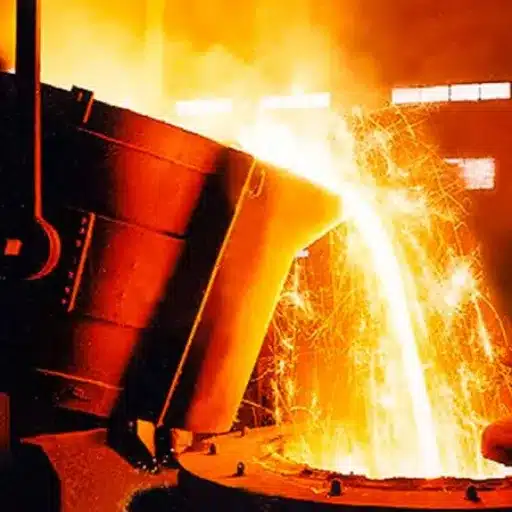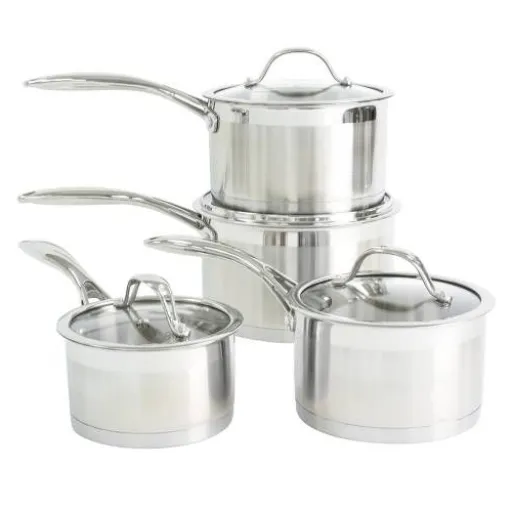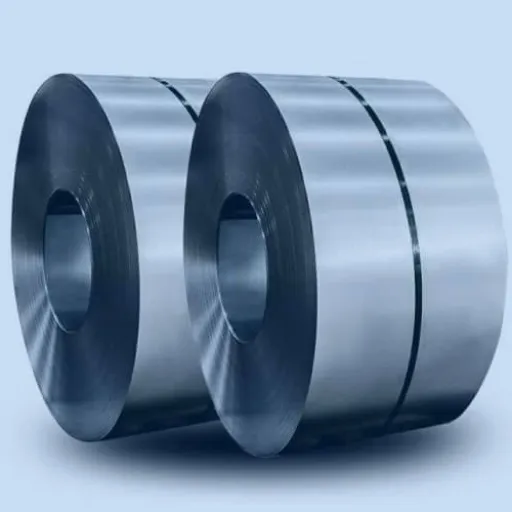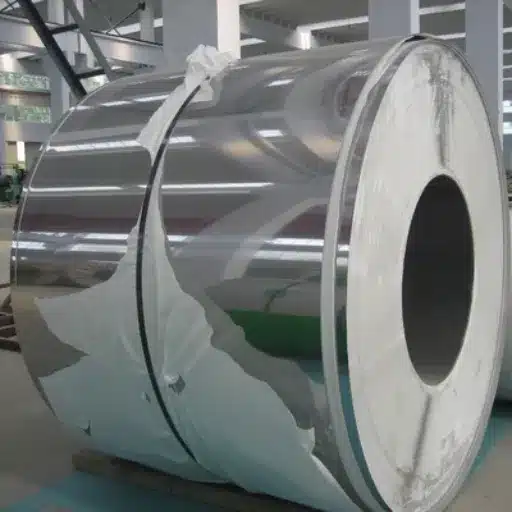The melting points of metals are among the most important characteristics of materials and this is the reason industries like, construction, manufacturing and engineering, make use of them. Different metals like steel, stainless steel, etc. have their melting points that make them suitable for high-temperature applications and their melting points thus property and use are interlinked. In this blog post we will take a tour through the melting points of metals and bring their significance to the surface, their differences and the reasons why such knowledge is necessary for professionals and amateurs alike. Manufacturing machines, metallurgy or simply inquisitive about the science of metal properties, this guide will surely help you in burning your understanding of metal properties with new insights. So, get ready for an engaging and easy comprehension of these concepts as we unravel them!
Introduction to Melting Points
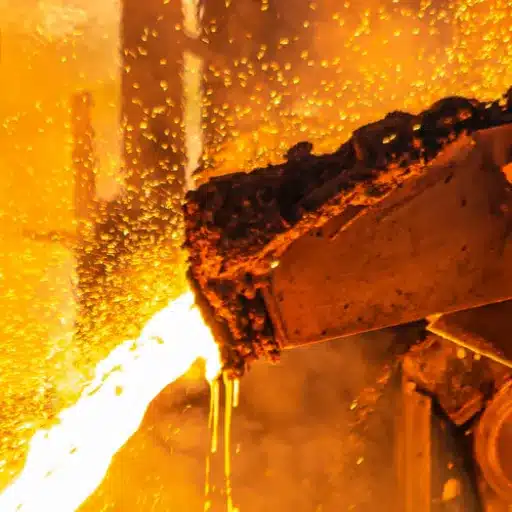
Melting Points: A Key Factor in Processing and Utilization
Melting point ranking of metals is important in all different industries and applications. Characteristic melting points of metals demarcate the specific temperatures at which solid-vapor or liquid-gas changes occur, thus directly influencing casting, welding, alloying, and 3D printing-in particular through setting the criteria for them. Among the metals with the lowest melting points, soldering from tin (231.9°C) and lead (327.5°C) are commonly used in electronics because they are the most energy-efficient metals to keep molten. Tungsten, which has an astonishing melting point of 3,422°C, is unsuitable for the electronics industry but preferred for applications demanding heat-resistance in extreme heat, like aerospace or lamp filament manufacturing.
Moreover, this expertise is crucial to damage control in structures as well as to proper failure prevention in situations with drastic changes in temperature. To illustrate this, at the construction sites the melting point of steel (approximately 1,370°C – 1,510°C depending on the alloy) has to be very carefully considered, and corresponding measures adopted, in order to prevent metal softening and possibly leading to structural collapse. Besides this, the capability to forecast melting behavior is still very helpful when it comes to the selection of materials and consequently the efficiency of the operation; thus, the desired end-use will be attained with no surplus of waste or resource cost incurred. In this manner, to master the melting points of the materials is not only a niche but everyone involved in material science theory and practice must-have skill.
Steel: A Comprehensive Analysis and Its Uses
Steel is the most common material in the entire world due to its many different properties such as being which is cost-effective. To alter the iron and carbon-mixed steel thus less its purity or through special treatments means, the properties steel have can be tailored, thus being able to be used in a wide range of applications. With more than 1.8 billion metric tons of steel produced worldwide in 2022, it still remains a major player in the sectors of construction, automotive, energy, and manufacturing that are heavily dependent on it.
Uses of Steel
Building Industry
Steel is a key element in today’s building practices. It is the material in the making of not only large buildings like skyscrapers but also bridges and houses. Porous and hollow structures reinforced with steel rods, known as rebars, give strength to concrete and also make sure that the structure can handle the tension and the environmental impact. The construction sector thirsts for about 52% of all the steel produced worldwide, as calculated by the World Steel Association.
Car Industry
Steel is indeed the key raw material in the making of a safe and durable car body, thus continuing to be highly dominated in the manufacturing of vehicles. With the application of Advanced High-Strength Steels (AHSS), the weight of the vehicles is reduced while at the same time their crashworthiness is enhanced thus contributing to the combination of fuel efficiency and safety. Cars use about 12 percent of the world’s steel consumption.
Melting Point of Steel
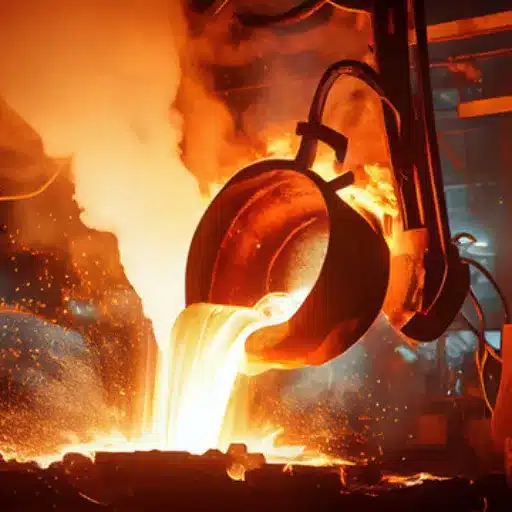
Definition and Significance of the Melting Point of Steel
Steel melting point varies from about 2,500°F to 2,800°F (1,370°C to 1,540°C) and it is not always the same but dependent on the composition and alloying elements. The melting point of pure iron, the major component of steel, is roughly 2,800°F (1,538°C). In case the elements such as carbon, manganese, nickel, or chromium are incorporated, the melting temperature will be decreased, and thus, it will be possible to produce the grades of steel that are suitable for different industries.
The steel melting point knowledge is indispensable in the various industrial applications, especially in the manufacturing and fabricating processes. The melting point of steel specifies the limits for casting, forging, and welding. Automotive, aerospace, and construction industries, which are heavily dependent on advanced technologies, are among those that rely on these exact melting points for the purposes of maintaining the strength and the performance of steel parts.
Comparison of Different Types of Steel and Their Melting Points
Carbon Steel
Carbon steel is one of the prevalent steel types, and its melting point is in the range of about 2,500°F to 2,650°F (1,370°C to 1,450°C). Carbon content primarily determines the melting point of carbon steel. Low-carbon steel is said to have a slightly higher melting point than high-carbon steel.
Stainless Steel
Stainless steel, which is famous for its ability to resist corrosion, has a melting point of about 2,550°F to 2,790°F (1,400°C to 1,530°C). Austenitic grades, like 304 and 316 stainless steel, have melting points that are quite high due to their chromium and nickel content, while ferritic and martensitic grades may be somewhat different but within this range.
Tool Steel
Each steel type has a melting point and tool steel is no exception. Tool steel is meant for applications where high hardness and heat resistance are desired, and it has a melting point range of about 2,500°F to 2,700°F (1,370°C to 1,480°C). Alloys such as tungsten, molybdenum, and vanadium augment with high-temperature performance, but the melting point increase is not significant when compared to carbon or stainless steels.
Melting Points of Metals
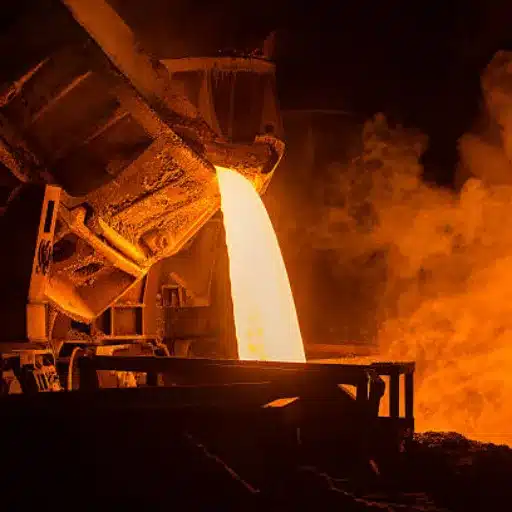
Common Metals and Their Melting Points Overview
The melting point is among the most accessible metal properties understood which support metals in varying ways across industries and applications. Upfront casting, welding, and giving the needed temperatures for the manufacture of products are some of the processes that rely heavily on these melting points. The review that follows introduces several of the most processed metals as melting points and more:
Aluminum: The melting point of aluminum is about 1,221°F (660.3°C) and its light weight and resistance to corrosion properties made it very common in the aerospace and automotive industries.
Iron: Taking about 2,800°F (1,538°C) to melt, iron ranks among the most abundant and versatile metals. Generally, it is the key ingredient in steel-making.
Steel: The melting point of steel is around 2,500°F to 2,800°F (1,370°C to 1,538°C), but it varies according to the alloying composition. The addition of carbon, chromium, or nickel can push the melting point higher or lower.
Copper: Melting at 1,984°F (1,085°C), copper is highly utilized for its good electrical and thermal conductivity.
Gold: The melting point of the priceless metal is 1,948°F (1,064°C) which is applicable to the making of detailed designs for jewelry as well as for electronic manufacturing.
Silver: Silver has a melting point of 1,763°F (961.8°C) and thus, it is one of the conductors used in electronics, jewelry, and industrial applications.
Titanium: Titanium melts at a very high temperature of 3,034°F (1,668°C), thus it is a lightweight, strong, and highly corrosion-resistant metal which is commonly used in the medical and aerospace sectors.
Lead: Lead melts fairly easily, at 620.6°F (327°C), but this does not shut the door on its usage in batteries and radiation shielding applications, among others.
Lowest and Highest Melting Points Among Metals
Lowest Melting Point: By far, the metal mercury is the one that melts at the lowest temperature, it has a melting point of -37.89°F (-38.83°C). Mercury’s liquidation at room temperature is the reason for its being the principal substance in thermometers, barometers, and a few scientific instruments. Nevertheless, its toxic nature is prompting the gradual replacement of mercury with safer substitutes.
Highest Melting Point: Tungsten is the metal with the highest melting point, which is 6,192°F (3,422°C) if you can believe it. The remarkable ability of tungsten to withstand such high temperatures without melting makes it the best material for and very durable in extreme heat applications, like the filaments in incandescent bulbs, rocket engine parts, and even cutting tools.
Stainless Steel and Its Melting Point

Understanding the Melting Point of Stainless Steel
Stainless steel, which is a metal alloy, is very much recognized for being very tough, versatile, and used in many industries. Its melting point, one of its main physical characteristics, is usually between 2,500°F and 2,800°F (1,370°C to 1,540°C) depending on its exact composition. The melting points are different because of the different alloys, since stainless steel is made by mixing iron with elements such as chromium, nickel, and molybdenum.
The melting point of stainless steel is a very important aspect to consider when selecting the grade of stainless steel suitable for specific working conditions. For example, Type 316, austenitic stainless steel, which is one of the major grades used for marine applications, can tolerate about 2,500°F (1,370°C) temperature. However, for more rigorous applications, Type 310 is the choice usually made since it keeps its strength at the maximum temperature of 2,200°F (1,204°C).
Comparative Analysis: Stainless Steel vs. Other Alloys
Corrosion Resistance
The main reason why stainless steel is so much used is that it fights oxidation and rust like a real knight with a sword made of chromium, which is the main protective layer. As an example, Type 316 stainless steel, which contains molybdenum in addition to the basic components, gives the best resistance to chloride-rich environments, compared to plain carbon steel or aluminum alloys. Conversely, nickel-based alloys like Inconel, even if they are very costly, are the best when it comes to dealing with extreme corrosive environments that include seawater and acidity, they will not be affected even when the harsh conditions last for a long time.
Temperature Tolerance
Stainless steel has very good heat resistance and the likes of Type 310 and Type 446 can easily survive more than 2,000°F (1,093°C). Nevertheless, some superalloys such as Hastelloy or titanium-based ones can outdo stainless steel in retaining their strength and structural integrity at high temperatures, thus making them the trendies in aerospace and turbine applications.
Strength and Durability
Stainless steel is one of the materials with the right mix of tensile strength and durability. For example the Type 304 grade has properties that are mainly structural and that are sufficient for many applications. However, titanium alloys are often more costly because they are generally stronger and lighter, thus, they are used in critical places like aircraft manufacturing. At the same time, carbon-based alloys such as Tool Steel are extremely durable and thus they are mainly used in heavy wear applications where they are usually heavy-duty but still need to be coated to protect against rust.
Applications of Melting Points in Industry
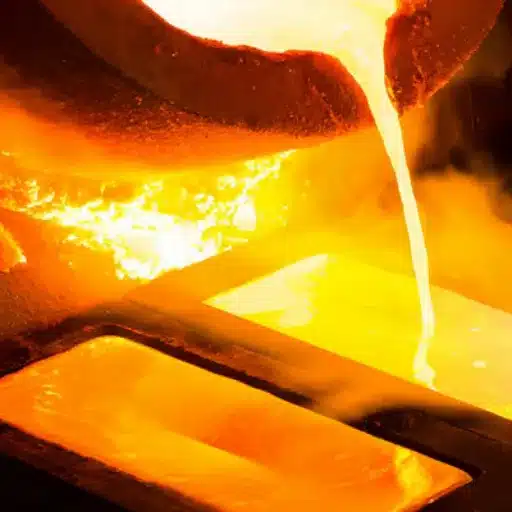
Steel Melting in Construction and Manufacturing
Usage in Construction
Steel is one of the main materials used in the construction industry, that can be remelted and thus made into structural elements such as beams, columns, and bars. After being melted, steel is often shaped into precise forms through modern foundry methods which ensures that it matches the engineering specifications. Furthermore, technologies like continuous casting and electric arc furnaces are used in combination to increase the output of the steel making process. The latest data from the industry shows that worldwide steel production was more than 1.89 billion metric tons in 2022, and the construction industry, which included skyscrapers, bridges, and even residential buildings, was one of the major contributors to this demand.
Application in Manufacturing
In the production of various products, manufacturing industry requires melted steel as an essential part for manufacturing plants and components. High-strength steel is often used in the automotive, aerospace, and shipbuilding sectors due to its ability to resist extreme pressures and conditions. For instance, in the automotive sector, the components like engine parts, gears, and even the suspension systems are usually made of steel. The application of automation in the melting of steel components allows for better quality of the products and at the same time it cuts down on the cost of production. It is estimated that globally, about 25% of the automotive body structure is made up of high-strength steel, which thus also contributes to the increase in safety and fuel efficiency.
Impact of Melting Temperatures on Material Selection
The melting temperature of the material is crucial for its selection in various industries, it not only determines the manufacturing process but also affects the final application of the material. Every material has its own characteristic thermal properties, which in turn dictate how it will behave in a given environment or operating condition. To illustrate, steel, which has a melting point of roughly 2,500°F (1,370°C), gets its name from its versatility and strength hence it is the most common material used in the construction, automotive and aerospace industries. On the contrary, aluminum, which has a melting point of approximately 1,220°F (660°C), is preferred for lighter components such as in transportation and packaging.
Thermoplastics, which are lower melting point materials, are now being increasingly used in the electronic and consumer goods industries for their easy molding and efficient processing. Tungsten, however, which is a high melting point material (around 6,192°F or 3,422°C), is still a must-have for specialized applications such as the aerospace industry or high-temperature furnaces where extremely robust materials are required.
Reference Sources
-
Industrial Metal Supply
- Title: “Melting Points for Metals | Metal Melting Temperatures”
- URL: industrialmetalsupply.com
- This source provides a comprehensive overview of the melting points of various metals, including steel, and is a trusted resource for industrial and manufacturing professionals.
-
Hydraflu
- Title: “Comparing the Melting Points of Different Types of Steel”
- URL: hydraflu.com
- This article discusses the melting points of different steel types, emphasizing the factors that influence these temperatures, making it a valuable resource for engineers and metallurgists.
-
Industrial Metal Service
- Title: “What Is the Melting Point of Steel?”
- URL: industrialmetalservice.com
- This source provides detailed insights into the melting temperature range of steel alloys, catering to both industrial professionals and academic researchers.
Frequently Asked Questions (FAQs)
What steel melting point?
Steel melting point varies from 1370°C (2500°F) to 1510°C (2750°F) depending on the composition especially carbon content and alloy type. Steel is mainly an iron and carbon alloy, and its melting point to a great extent depends on these parameters.
What are the steel types and their melting points?
There are many kinds of steel like low carbon, high carbon and alloy steel, each of them having distinct melting points. Low carbon steel has melting point around 1425°C (2600°F) and high carbon steel can melt even higher due to its increased carbon concentration. Alloy steels may have different melting points depending on the particular alloys used in their production.
What is the melting point metals temperature range?
Melting points can be very different from one kind of metal to another. For instance, aluminum melts at about 660°C (1220°F) and copper at 1085°C (1985°F). Knowing the melting temperatures range of metals is necessary for metal working and casting operations.
Impact of Chemical Composition on Melting Point of Steel?
Steel melting point is largely determined by its chemical makeup. For example, with increasing carbon content, steel’s melting point rises, while other alloying elements like chromium and nickel can as well define the final melting point.
Which metal has the lowest melting point?
Mercury is the metal with a lowest melting point among all, melting at -38.83°C (-37.89°F). Other low melting point metals include lead that melts at 327.5°C (621.5°F), and tin that melts at about 231.9°C (449.4°F).

